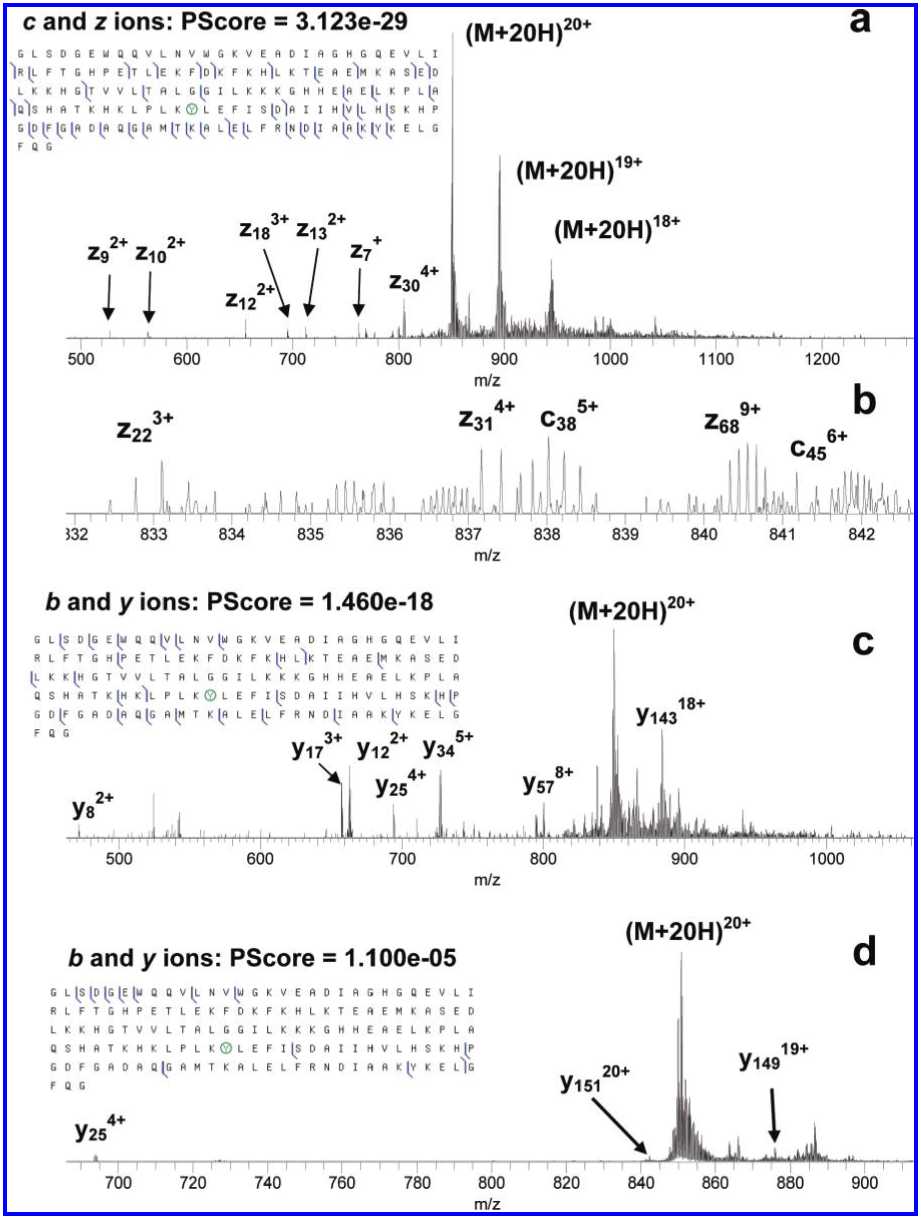
Figure 1. ECD (a, b), IRMPD (c), and CID (d) MS/MS of mononitrated myoglobin. Nitrated tyrosine residues are circled in the fragment
summaries.
publication,40 did not lead to the appearance of new ECD
fragments, although depletion of the charge-reduced ions was
observed, and the intensities of the ECD fragments increased in
comparison with the standard ECD. CID and IRMPD of nonre-
duced nitrated lysozyme produced only a few fragments, as they
could not cleave the disulfide bonds (data not shown). Lower
charge states, z < 10, of nonreduced lysozyme produced even
fewer MS/MS fragments than the 10+ state.
As expected, reduction/alkylation of the disulfide bonds
provided a remarkable improvement in the sequence coverage
by MS/MS. For bis-nitrated lysozyme, the total number of
fragment ions was 56, 47, and 21 from ECD, IRMPD, and CID,
Analytical Chemistry, Vol. 82, No. 17, September 1, 2010 7287
More intriguing information
1. MANAGEMENT PRACTICES ON VIRGINIA DAIRY FARMS2. Keynesian Dynamics and the Wage-Price Spiral:Estimating a Baseline Disequilibrium Approach
3. Putting Globalization and Concentration in the Agri-food Sector into Context
4. The name is absent
5. The name is absent
6. Campanile Orchestra
7. Estimating the Technology of Cognitive and Noncognitive Skill Formation
8. Knowledge and Learning in Complex Urban Renewal Projects; Towards a Process Design
9. Om Økonomi, matematik og videnskabelighed - et bud på provokation
10. The name is absent